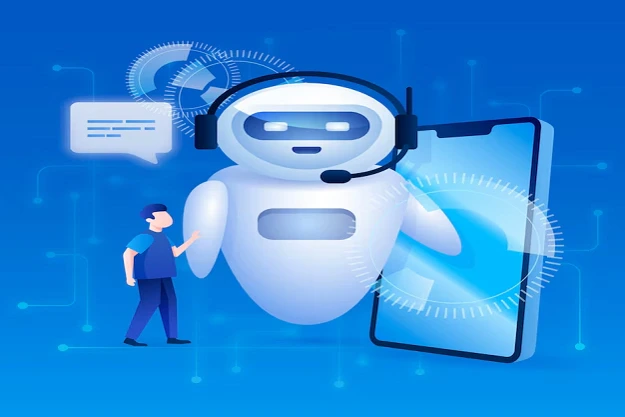In today’s digital age, customers expect instant, personalized, and efficient support. Businesses must adapt to meet these growing demands, and chatbots have emerged as a powerful solution. By providing 24/7 assistance, reducing response times, and delivering tailored interactions, chatbots are revolutionizing the customer experience.

1. What Are Chatbots and How Do They Work?
Definition: Chatbots are AI-powered tools designed to simulate human conversation, enabling seamless interactions between businesses and customers.
Types of Chatbots:
- Rule-based chatbots: Operate on predefined scripts and respond to specific keywords or commands.
- AI-powered chatbots: Utilize natural language processing (NLP) and machine learning to understand and respond dynamically to user queries.
How They Work: Chatbots leverage NLP, AI, and integrations with messaging platforms to interpret customer input and deliver relevant responses. They continuously learn from interactions to enhance accuracy and user experience.
2. Benefits of Chatbots for Customer Experience
- 24/7 Availability: Ensure round-the-clock customer support without human intervention.
- Instant Responses: Reduce wait times by providing immediate answers to common queries.
- Cost Efficiency: Lower operational costs by automating repetitive tasks and reducing the need for large support teams.
- Personalization: Use customer data to tailor recommendations and responses.
- Scalability: Handle multiple customer interactions simultaneously without compromising quality.
- Consistency: Ensure uniform and accurate responses to frequently asked questions.
3. Key Use Cases for Chatbots in Customer Experience
- Customer Support: Provide instant answers to FAQs, troubleshoot issues, and guide users through processes.
- Lead Generation: Engage website visitors, qualify leads, and collect contact details.
- E-commerce Assistance: Help customers find products, track orders, and manage returns.
- Appointment Scheduling: Enable users to book, reschedule, or cancel appointments.
- Feedback Collection: Conduct surveys and gather customer insights to improve services.
- Personalized Recommendations: Suggest products or services based on user behavior and preferences.
4. Best Practices for Implementing Chatbots
- Define Clear Goals: Establish objectives such as reducing support tickets or increasing sales.
- Know Your Audience: Design chatbot interactions tailored to customer needs and preferences.
- Keep It Simple: Start with basic functionalities and expand over time.
- Use Natural Language: Ensure conversations are fluid and user-friendly.
- Offer Human Escalation: Provide an option to connect with a human agent when needed.
- Test and Optimize: Continuously analyze chatbot performance and refine responses based on feedback.
5. Examples of Successful Chatbot Implementations
- Sephora’s Virtual Artist: Enhances shopping by offering personalized beauty recommendations.
- KLM’s BlueBot: Assists travelers with booking and customer support.
- Bank of America’s Erica: Provides financial advice and account inquiries through AI-driven conversations.
6. Future Trends in Chatbot Technology
- AI Advancements: Improved NLP and machine learning for more sophisticated interactions.
- Voice-Enabled Chatbots: Integration with voice assistants like Alexa and Google Assistant.
- Omnichannel Support: Seamless chatbot functionality across websites, apps, and social media.
- Emotional Intelligence: Chatbots that detect and respond to user emotions for enhanced engagement.
- Proactive Engagement: AI-driven chatbots that initiate conversations based on user behavior.
Chatbots are transforming customer service by enhancing accessibility, efficiency, and personalization. Businesses that embrace chatbot technology can stay ahead of the competition and deliver exceptional customer experiences. Start exploring chatbot solutions today and revolutionize the way you engage with your customers!






Leave feedback about this